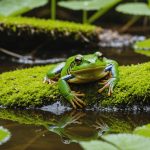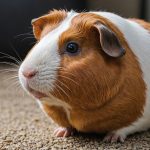Making your own DIY puzzle feeder for your pet bird can be a rewarding experience. Not only does it provide a stimulating challenge for your feathered friend, but it also allows you to create something unique that caters to their specific needs. Birds, particularly parrots, are intelligent creatures that require mental and physical stimulation to stay healthy and happy. Foraging is a natural behavior for them, and a puzzle feeder can encourage this instinct while also offering treats and food in a fun way. In this article, we will guide you through the process of making a DIY puzzle feeder, exploring various options and materials to ensure that your pet bird enjoys a safe and engaging environment.
Understanding the Importance of Puzzle Feeders
Before diving into the creation of a DIY puzzle feeder, it is crucial to understand why these feeders are important for your pet bird’s well-being. Birds, especially parrots, are known for their high intelligence and curiosity. Providing them with toys that challenge their mental abilities can prevent boredom and promote natural foraging behaviors.
This might interest you : Unlocking urban beekeeping: key strategies for a flourishing beehive in your uk garden
A puzzle feeder serves multiple purposes. First, it keeps your bird entertained, as they will spend time figuring out how to access the treats or food inside. This mental stimulation is essential for their overall health, as it mimics the foraging they would naturally do in the wild. Secondly, puzzle feeders encourage physical activity. As your bird works to retrieve food, they are exercising and engaging their muscles, which is vital for their physical health.
Moreover, puzzle feeders can help reduce behavioral issues that arise from boredom or anxiety. Birds that are not mentally stimulated may develop destructive behaviors, such as excessive chewing or feather plucking. By incorporating a DIY puzzle feeder into their daily routine, you can provide a safe outlet for their energy and curiosity. Lastly, making your own feeder allows you to tailor it to your bird’s size and preferences, ensuring a personalized experience that store-bought options may not offer. This understanding highlights the significance of the time and effort you will invest in crafting a puzzle feeder for your beloved pet.
Have you seen this : What are the best techniques for handling a nervous pet guinea pig?
Choosing the Right Materials for Your Puzzle Feeder
Selecting the appropriate materials is a critical step in creating a safe and effective DIY puzzle feeder for your birds. The materials you choose should be non-toxic and safe for your feathered friends. Common materials include wood, cardboard, paper, and various types of plastic, but not all are suitable for every type of bird.
Wood is an excellent choice for creating durable and safe puzzle feeders. Untreated hardwoods, such as pine or birch, can be used to construct various shapes and designs. Ensure that any wood you choose is free from chemicals or pesticides. If you decide to use cardboard, opt for plain, uncoated cardboard without any inks or coatings that could be harmful.
Paper can also be a great addition to your puzzle feeder. You can create layers or compartments that your bird must navigate through to get to their treats. Just make sure the paper is free from toxic dyes and chemicals. For a more interactive experience, consider incorporating some plastic items, like small containers or bottle caps, as long as they are sturdy and bird-safe.
When designing your puzzle feeder, think about how you can make it engaging. Items such as treats, fruits, or vegetables can be hidden inside or attached to the outside to entice your bird. Experiment with different textures and shapes to keep things interesting. Remember that your primary goal is to provide a safe, engaging, and stimulating environment that caters to your bird’s foraging instincts.
Step-by-Step Guide to Creating a DIY Puzzle Feeder
Now that you have a clear understanding of the importance of puzzle feeders and the materials required, let’s dive into the step-by-step process of creating your own DIY puzzle feeder.
-
Gather Your Materials: Start by gathering all the materials you will need. This includes untreated wood, cardboard, non-toxic paper, small plastic containers, and any treats you want to include.
-
Design Your Feeder: Decide on the design of your puzzle feeder. You might want to create a box with compartments, a hanging feeder with layers, or even a simple cardboard tube with holes. Sketch your ideas to visualize the final product.
-
Cut and Assemble: Using safe tools, cut your materials to the desired shapes and sizes. If you are using wood, ensure that the edges are smooth to prevent any injuries to your bird. Assemble the pieces using bird-safe glue or non-toxic fasteners, ensuring everything is secure and stable.
-
Create Access Points: Drill holes or cut openings in the feeder where your bird can access the treats. Make sure the openings are not too large, as you want to provide a challenge while still being able to access the food easily.
-
Add Treats: Fill your puzzle feeder with a variety of treats that your bird loves. You can include seeds, nuts, fruits, or even their regular food. Mixing different types of food can increase the excitement and challenge for your bird.
-
Test It Out: Once your DIY puzzle feeder is complete, introduce it to your bird. Observe how they interact with it and make adjustments as necessary. You might find that you need to change the difficulty level or the types of treats to keep them engaged.
This step-by-step guide provides a foundation for creating your own DIY puzzle feeder. Remember, the process should be fun and tailored to your bird’s unique preferences!
Enhancing the Puzzle Experience for Your Bird
Creating a DIY puzzle feeder is just the beginning. To truly enhance the experience for your bird, consider incorporating additional elements that can provide even more engagement and stimulation.
One way to elevate the puzzle experience is to change the arrangements and types of treats regularly. Birds thrive on variety, and altering the treats can keep their interest piqued. You can also experiment with the level of difficulty. For example, you might start with larger openings for easy access and gradually reduce the size or increase the complexity as your bird becomes more adept at foraging.
Another idea is to rotate different types of feeders. If you have multiple designs, alternate them to prevent your bird from becoming bored with a single option. Mixing it up can also challenge them in new ways, encouraging mental agility and problem-solving.
Consider adding layers or additional compartments to your puzzle feeder. For instance, you might incorporate a sliding door that your bird needs to push aside or a set of removable pieces that they need to manipulate. These elements can provide a more dynamic experience and promote further exploration.
Also, remember to observe your bird’s interactions with the puzzle feeder. Watching them play can give you invaluable insights into what works and what doesn’t. You might notice they prefer certain types of treats or specific challenges. Use this information to continuously improve and adapt your DIY puzzle feeder to best suit your pet bird’s needs.
Incorporating these enhancements can significantly improve the foraging experience, keeping your bird engaged and satisfied.
Safety Considerations and Maintenance for Your Puzzle Feeder
As you embark on creating a DIY puzzle feeder for your pet bird, it is vital to keep safety and maintenance in mind. Your bird’s health and safety should always come first, and regular upkeep will ensure that the feeder remains a safe and engaging environment.
When constructing your puzzle feeder, always use safe and non-toxic materials. Avoid items that might splinter, crack, or break easily, as sharp edges can pose a risk to your bird. Regularly inspect the feeder for any signs of wear or damage, and replace any components that appear compromised. If you used cardboard or paper, be aware that these materials can degrade over time, especially if they become wet or soiled. Regular cleaning is essential to prevent bacteria or mold from developing, which can be harmful to your bird.
Cleaning your puzzle feeder should be done regularly, ideally once a week. Use a bird-safe disinfectant or a simple solution of vinegar and water to wipe down the surfaces. Make sure to thoroughly dry the feeder before refilling it with treats. This routine maintenance will not only keep the feeder safe but will also help maintain the interest of your bird by providing a clean foraging environment.
Lastly, ensure that any edible items you include in the puzzle feeder are fresh and appropriate for your bird’s diet. Regularly check the expiration dates on treat packages, and avoid using any food items that have spoiled or gone stale. By prioritizing safety and maintenance, you can create a puzzle feeder that offers a stimulating, healthy, and enjoyable experience for your pet bird.
Creating a DIY puzzle feeder for your pet bird is an engaging and beneficial project that can provide hours of mental stimulation and physical activity. By understanding the importance of these feeders, choosing appropriate materials, following a step-by-step guide, enhancing the experience, and prioritizing safety, you can create a unique and tailored environment for your bird.
Engaging your pet bird in foraging behaviors will ultimately contribute to their overall well-being and happiness. With the right approach, your DIY puzzle feeder can become a valuable addition to their daily routine, ensuring they remain entertained, challenged, and content. Embrace the creativity of crafting your own feeder, and watch as your bird thrives in their enriched and interactive environment.











